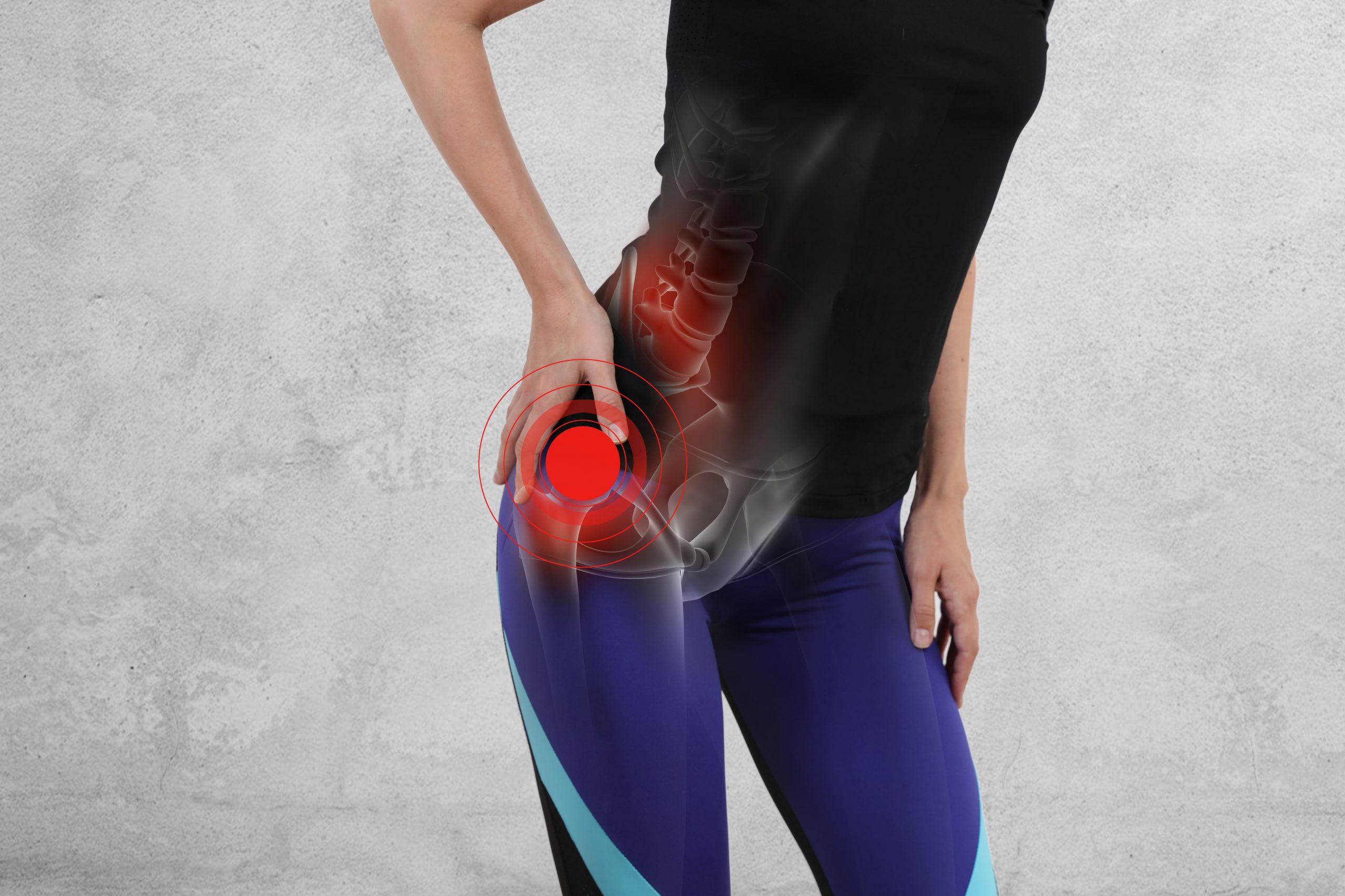Trochanteric Bursitis
Trochanteric bursitis is the inflammation of the trochanteric bursa, which is a small, fluid filled sac that lies over the prominent bony aspect on the side of the hip. The bursa acts as a cushion between the soft tissues and bone to minimise friction as well as act as a shock absorber during movement. Inflammation of the bursa to the point of bursitis tends to be a slow process that occurs over time.
Cause of Trochanteric Bursitis
There are two main types of bursitis, acute and chronic bursitis.

The acute bursitis occurs as a result of direct trauma to the bursa or a large overload to the bursa over a short period of time. The chronic bursitis occurs due to a longer period of increased friction and/or pressure, or a prolonged overuse of the bursa.
Symptoms of Trochanteric Bursitis
The common symptoms of trochanteric bursitis are below:
- Pain and tenderness over the lateral hip, especially over the prominent aspect of side of the hip bone.
- Swelling or heat over the outer side of the leg
- Referred pain that may radiate down the thigh
- Pain when sleeping on your side, especially when laying on the affected hip
- Pain when sitting with crossed legs
- Pain with prolonged walking, sitting and standing and pain when using stairs
Diagnosis and Assessment
Diagnosing lateral hip pain can be difficult given the complexity of the hip joint structures and that clinical presentations can be diverse between people. Due to this, it is important that there is an appropriate assessment of the hip by a qualified health professional for an accurate diagnosis of trochanteric bursitis. The assessment will include a thorough subjective history, palpation, range of motion and strength testing among others that may be required. The main assessment finding to support the diagnosis of bursitis is tenderness on palpation over the prominent aspect of the hip bone where the bursa lies.
Treatment
Trochanteric bursitis can be successfully managed by Physiotherapy treatment in the majority of people within a period of around six weeks. However some people who have a more chronic or recurring case can take a longer period to recover.
The treatment of trochanteric bursitis will be completed in stages. Treatment will be completed under the guidance of your Physiotherapist who will specify the treatment to each individual and their assessment findings and goals. This enable treatment to be appropriate and as efficient as possible.
Initially treatment will be aimed at reducing pain and inflammation in the affected hip. This is as it is typically the main reason for treatment. This can be achieved through a variety of modalities, some of which can be done at home such as ice and anti-inflammatories. Some will be completed by your Physiotherapist such as, soft tissue massage, dry needling and taping. They will also provide you with specific stretches and exercises that will assist with this.
Following the reduction of pain and inflammation, the following stage will be aimed at improving hip range of motion, muscle weakness and/or tightness, balance and correcting your gait, among any other deficits your Physiotherapist may have found during their assessment. This stage of treatment will also be aimed at correcting the cause of the bursitis. This could be improving strength, endurance, muscular tightness, balance or any biomechanical defects of the lower limb.
The next stage of rehabilitation is returning you back to full function and your desired activities. This could be returning to normal day to day activities or returning to sports. This reintroduction to activity will be guided by your Physiotherapist according to your progress as well as your goals to ensure that it is done safely and effectively.

The final stage is to prevent a recurrence of bursitis. Trochanteric bursitis does have a tendency to recur. However this is typically due to an inadequate rehabilitation or inappropriate reintroduction to activity. It is important to continue with the strength and conditioning exercises you will have been prescribed to maintain the hip reducing the likelihood of another episode.
